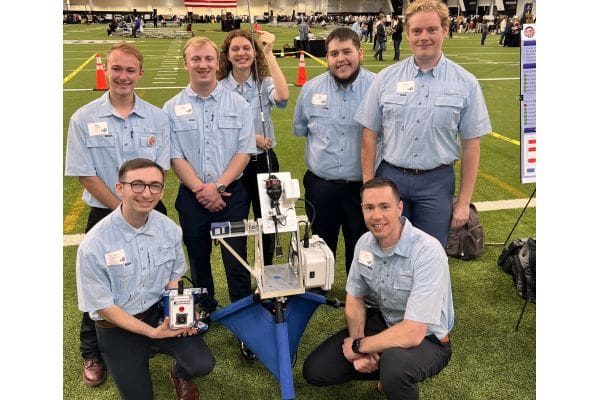KastKing Contributes to Getting Wounded Warriors Back On the Water

The simple pleasure of casting into the water and connecting with a fish attracts millions of anglers to the thrill of the sport. It’s easy to take the sport and hobby we love for granted until a traumatic injury takes that opportunity away.
Such is the case with many wounded warriors and first responders harmed in the line of duty. Spinal cord or head injuries can leave them with limited or no use of their hands, arms, and legs.
Before their injuries, these wounded heroes may or may not have been avid anglers; however, veteran assistance groups, such as River Deep Foundation, recognize the restorative power of being outdoors and having a renewed empowerment to cast and retrieve a lure to catch a fish.
Through a collaborative effort with their non-profit alliance member organizations, River Deep Foundation works with vets with debilitating spinal cord and other traumatic injuries to offer outdoor family events, such as fishing, to assist in re-engaging in sport and adventure.
This is where Colorado University Graduate Engineering student, Connor Borshard, and the team of six other fellow engineering graduate students stepped in to help. A non-profit group called Quality of Life Plus issued a call for university STEM programs to create innovative technology solutions that improve the quality of life for injured veterans and first responders. Borshard’s team was drawn to a project aiding in the casting, catching, and reeling of fish for individuals who have little to no dexterity in their hands or upper limbs. Borshard and his team proposed and engineered a brilliant solution they’ve dubbed, the Adaptive Fishing Device.
In summary, the Adaptive Fishing Device holds a spin cast rod and reel in the vertical casting position above a firm tripod base. The device receives inputs from the user, such as the desired casting distance, then loads a set of torsion springs to bring the rod back while depressing the casting button of the reel. Once loaded, the device springs the rod tip forward while releasing the casting button and launching the lure toward the target.
As Borshard explains, “We wanted the device to be relatively portable, yet stable enough for different terrains. It weighs in at 36 pounds total weight and has a 15-minute setup by those providing assistance to the angler.”
There are two methods of casting with the Adaptive Fishing Device. For those with some fine motor dexterity remaining in their fingers, a joystick can be maneuvered back and forth to load the cast. If the angler is further limited with no movement in the arms, hands, and fingers, a sip or puff device can be utilized to provide casting inputs to initiate the cast with air pressure.
The notion of getting veterans and first responders back out into the therapeutic element of the outdoors struck a chord with Borshard, who in addition to being a graduate student, is also an active-duty U.S. Marine. Once his graduate studies conclude at Colorado University, he’ll enter the Marine Corps flight training program.
When KastKing President, Al Noraker, heard of the initiative by the CU Engineering team, he leaped at the chance to aid in the effort by donating six-foot KastKing Crixus spin cast rods and KastKing Brutus spin cast reels to be used with the Adaptive Fishing Device.
“I’ve been fortunate to witness the incredible transformation from those with extreme PTSD and debilitating traumatic injuries leading to severe depression,” remarks Noraker. “I’ve seen it in a 19-year-old wounded warrior to an older Vietnam vet and it’s truly amazing how a simple experience of catching a fish changes their whole demeanor in such a short time.”
Recalling the transformation struck an emotional chord with Noraker, as he added, “When you witness the difference that fishing can make to people who have lost almost everything in the service of their country; well, that’s why I’m involved and will continue to be well after I’ve retired.”
For those interested in learning more about or implementing the Adaptive Fishing Device, Quality of Life Plus will take ownership once the graduate team hands over the finished product.
For inquiries about the device, Scott Huyvaert, Program Manager at Quality of Life Plus can be reached via email at scott.huyvaert@qlplus.org.
For technical data and inquiries on the design, Connor Borshard is available at cjborshard@gmail.com.
For more information about KastKing, contact Dena Vick at dena@kingeiderpr.com.
About KastKing:
Founded in 2013, KastKing had a vision of producing quality products designed by anglers for anglers and delivered directly to the consumer at affordable prices. True to that vision, KastKing products are developed through feedback from the fishing community and go straight to the manufacturing floor. This inverse of the traditional manufacturer-to-consumer formula introduces cutting-edge features into new products that anglers want and need. The brand has gained popularity among anglers by offering affordable innovation through in-house engineering, which allows KastKing to provide never before seen technology at truly remarkable prices. Ten years later, KastKing products have been sold to consumers in more than 150 countries and regions across the globe through a variety of supply chains. Originally, KastKing’s products were only available online, but consumers can now find their favorite products in a growing number of retail locations. For more information about KastKing and KastKing products, please visit our website at kastking.com or follow us on Instagram, Facebook, TikTok and YouTube.
The post KastKing Contributes to Getting Wounded Warriors Back On the Water appeared first on HuntingLife.com.
